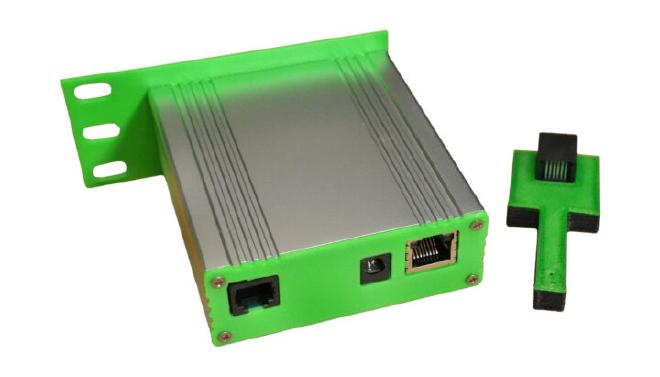Openviro Axe PoE Launches as New Environmental Sensor for Server Rooms and Cabinets

Table of Contents
The Openviro Axe PoE is an innovative, rack-mountable environmental sensor designed specifically for monitoring temperature, humidity, and air pressure in server rooms and other environments housing electrical equipment. Developed by Craft Computing, this device utilizes the Raspberry Pi RP2040 microcontroller, providing reliable and accurate readings.
Key Features #
The Axe PoE is equipped with two RJ12 connectors for Bosch BME280 sensors, which deliver an impressive accuracy of ±0.5°C. This design allows for separate measurements of intake and exhaust temperatures in server racks, enhancing monitoring capabilities compared to traditional internal sensors.
Specifications:
- Microcontroller: Raspberry Pi RP2040 dual Arm Cortex-M0+ at 133 MHz
- Storage: 16 MB flash memory
- Network Connectivity: 10/100 Mbps Ethernet RJ45 via LAN8710Ai
- Power Options: 5V via USB Type-C, 24–54V Power over Ethernet (PoE), or 12–48V DC via a barrel jack
- Dimensions: 90 x 82.8 x 28.8 mm
- Material: Aluminum enclosure
Sensor Specifications #
The Bosch BME280 sensors connected through RJ12 interfaces measure:
- Temperature Range: -40°C to +85°C (recommended: 0 to +60°C)
- Humidity Range: 0 to 100% relative humidity
- Air Pressure Range: 300 to 1100 hPa
- Accuracy: ±0.5°C for temperature, ±3% for humidity, ±1.7 hPa for pressure
Data Management #
The device employs the Simple Network Management Protocol (SNMP) for data querying, supporting versions 1, 2c, and a beta version of 3. It is compatible with various SNMP software, including Nagios, Observium, and Home Assistant, ensuring seamless integration into existing monitoring systems.
Availability #
The Openviro Axe PoE is currently in a crowdfunding campaign on Crowd Supply, with a funding goal of $45,000. A pledge of $149 secures one unit, which includes a THP probe, while additional probes are available for $29 each. Shipping costs are $8 within the U.S. and $18 internationally, with expected delivery by the end of September 2025.
The firmware for the device will be open-sourced post-campaign, though the hardware will remain proprietary. For more information on the product and its specifications, visit the manufacturer’s website.
Source: CNX Software – Embedded Systems News.